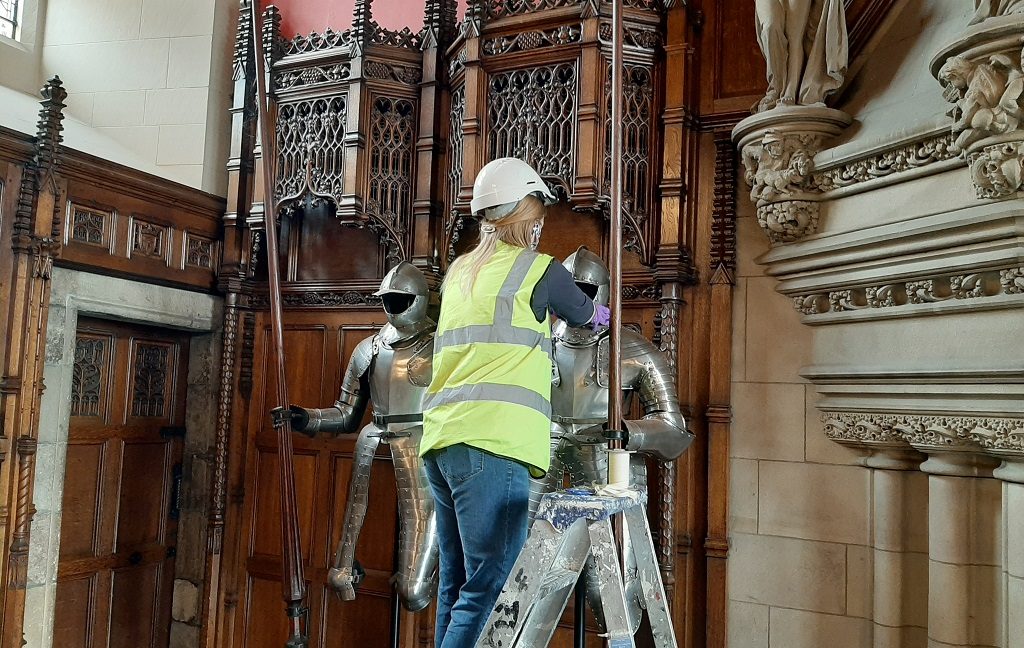It’s a Monday afternoon in late June and I’m standing on the esplanade leading up to Edinburgh Castle. The howling wind and lashing rain are by no means unusual, even at the height of summer.
What is odd about this experience is the sheer lack of people. There are no bustling tourists, no performers on the Royal Mile. No stands are erected, ready to host summer concerts or the Military Tattoo. The area is silent.
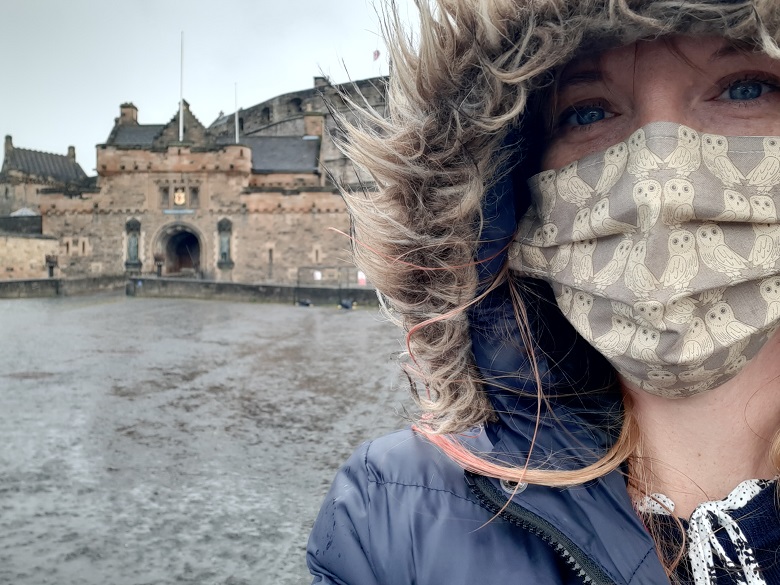
It was nice to get out despite the weather!
Collections in Lockdown
Of the 336 historic sites that Historic Environment Scotland manage, over half of them have an associated artefact collection. These objects include archaeological finds, fine art, carved stones, military objects, industrial equipment and much, much more.
They total over 38,000 items, span 5,000 years of history and are spread across the country from Shetland to Dumfries. Managing a dispersed collection is challenging at the best of times, let alone during a global pandemic!
When the government announced a full lockdown on 23 March we had already closed our staffed sites to the public. Many employees had begun working from home. Our remaining properties and offices were closed up and the last staff left the premises.
It was made clear from the outset that the safety of staff and visitors was our absolute top priority. Access to any buildings was prohibited and strictly limited to emergency response situations.
So, how could we care for our collections from afar?
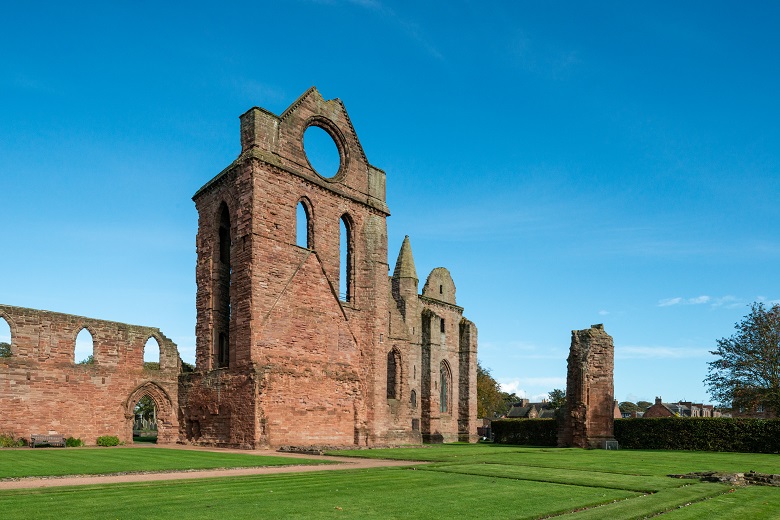
A new display due to be installed at Arbroath Abbey had to be postponed due to the lockdown.
Assessing the risk
The first steps as we entered into lockdown were to assess the status of our collections across the 140+ locations nationwide that they are displayed and stored at.
Many of our conservation and re-display projects are carried out over the winter months when our sites are quieter. It was crucial for us to quickly evaluate what stage these projects had reached. Were there any objects in temporary locations? How would we ensure that we communicated with contractors and stakeholders?
Our next task was to try and pinpoint what problems could arise during the lockdown period, both human and natural. Was there a likelihood of increased incidents of heritage crime, such as theft and vandalism? How might wildlife take advantage of a sudden lack of human activity?
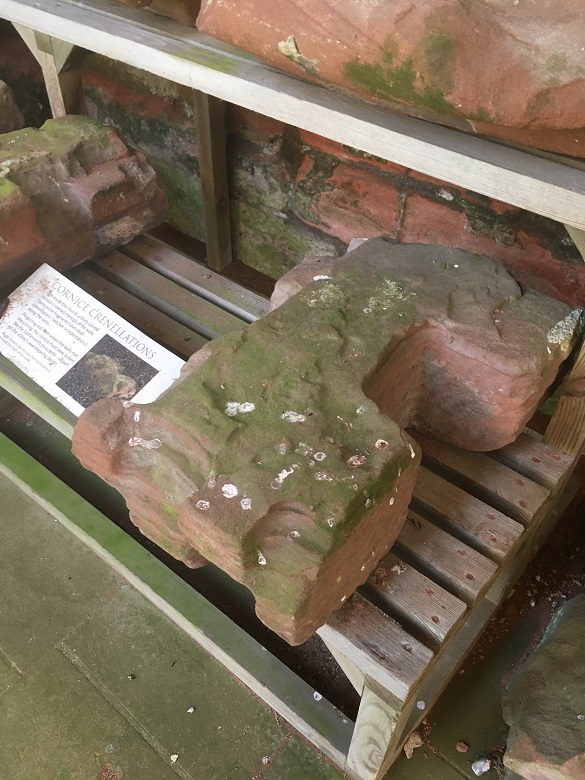
Bird droppings on a carved stone displayed at Sweetheart Abbey
Conditions: knowing the score
One of the biggest challenges we face, even prior to Covid-19, is maintaining environmental conditions that meet both the needs of our collections and the historic buildings that they are housed in.
Changes in temperature and relative humidity can have negative impacts on historic artefacts and building fabric. This leads to problems such as swelling, cracking and mould growth. Our Visitor Operations colleagues, usually vital in alerting us to any issues, were prevented from doing so by the unusual circumstances.
So we needed to consider which sites had environmental monitoring programmes set up, and whether the data from this monitoring would be remotely accessible.
Additionally, as lockdown coincided with the start of spring there was also an increased risk of insect pest activity.
We used all of these factors to create a a scoring system. This enabled us to form a list of sites it was deemed critical for us to get access to as soon as restrictions eased.
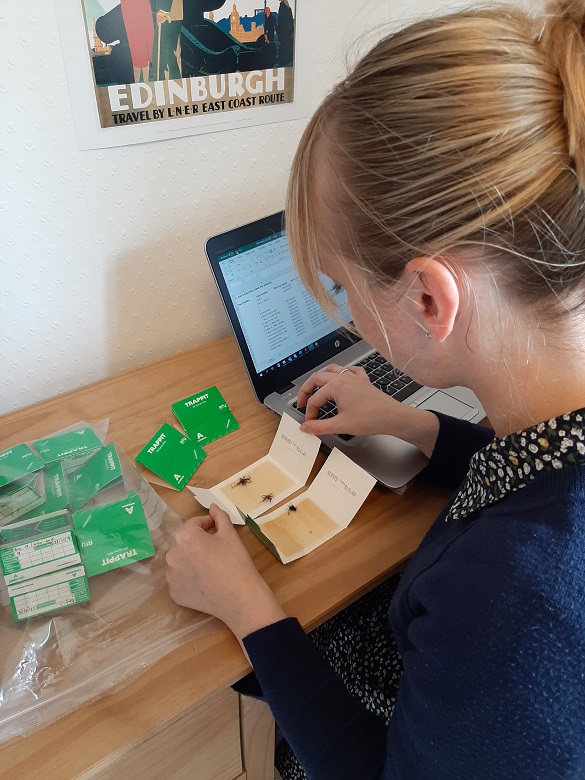
Pest traps from our stores were posted to Edinburgh for identification
Critical checks
Finally, the news came of an ease in restrictions. This meant we would shortly be able to commence carrying out collections checks at the critical sites. Hugely exciting (not least because many of us were itching to get out of our houses), but also a little nerve racking!
Our risk assessment had identified 36 sites with collections that should be checked on a weekly basis. However, these sites were spread across the country and most staff in the Collections team are based in Edinburgh.
To reduce the amount of travel and ensure compliance with lockdown guidelines, colleagues from our Monument Conservation Unit were drafted in to help. They took on the responsibility of completing checklists at their local sites.
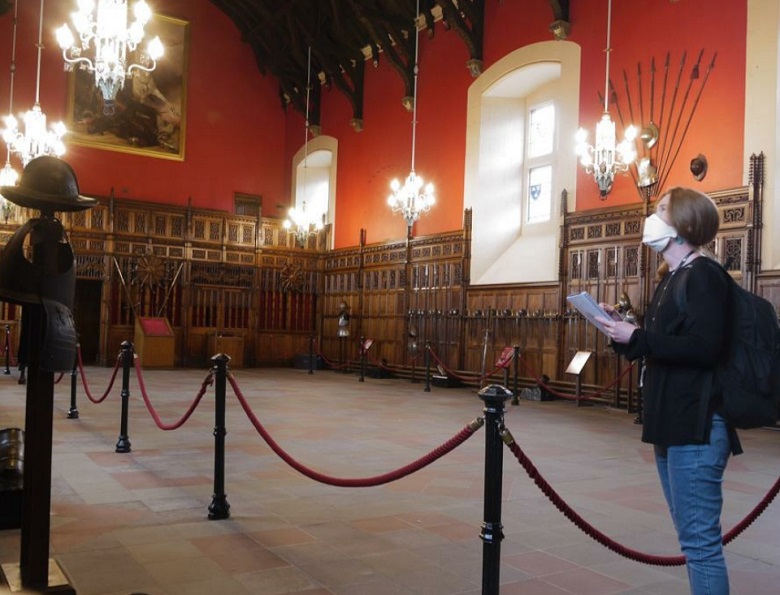
Kathy Richmond, Head of Collections and Applied Conservation, carrying out collections checks in the Great Hall at Edinburgh Castle
Staying safe
Managing the risk to staff during these exercises was a big consideration. As well as maintaining social distancing when working with others, staff would need to wear masks when working in internal spaces and gloves where needed.
Travel to sites by public transport was not permitted, good hygiene measures were reinforced, and regular updates and adjustments made as guidance changes required.
This process has now been running for 10 weeks and we’re pleased to say we’ve had no major incidents. That’s not to say things have been perfect. Sadly, our conservators have had to deal with instances of graffiti to buildings. And, like many institutions, we’ve had issues with pigeons!
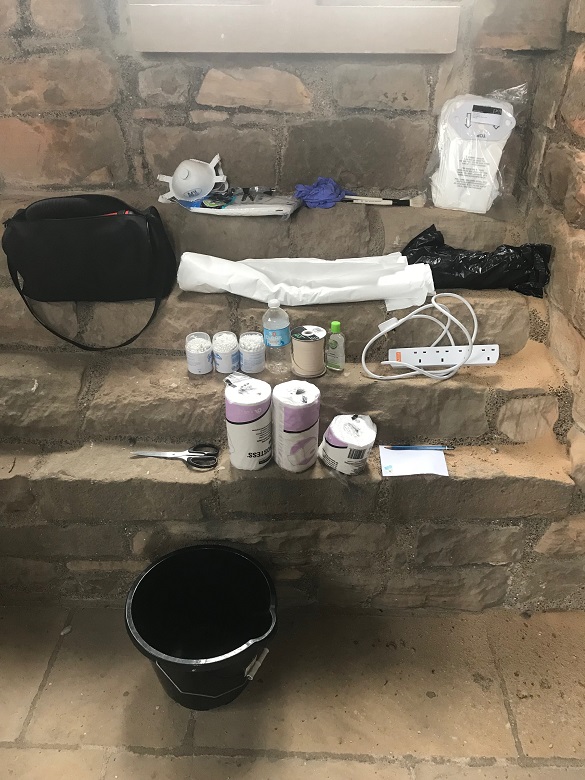
…and here’s the equipment needed to deal with those “pigeon issues”
The way forward
Ahead of Edinburgh and Stirling Castles reopening, we worked hard to ensure that everything was ready for welcoming visitors. This included carrying out specialist conservation: moving some larger items to allow for one-way routes and cleaning objects on open display, including plenty of suits of armour!
Currently, we’re assisting with the plans to reopen more Historic Scotland attractions in August and September. After that, we’ll shift our focus to assessing the collections at any properties which will not be opening just yet.
We are also reflecting on what went well and what we learned from. The processes that we’ve developed over the past few months are continuously being reviewed and refined.
Caring for the collections is always a team effort but from checks undertaken by our Estates team, to comparing approaches with peers in the museum sector, we’ve all pulled together to keep our heritage safe.
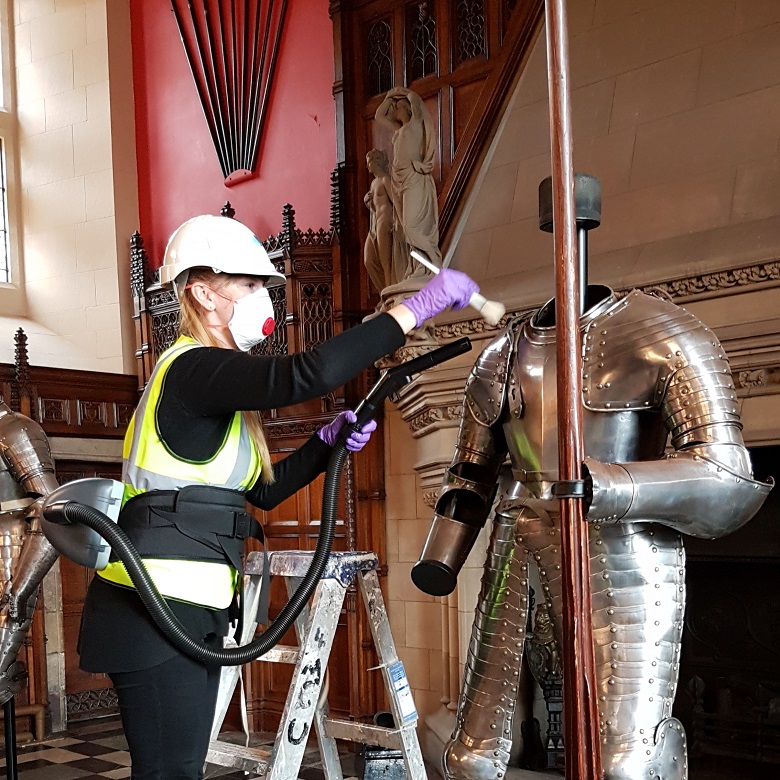
Explore our collections from anywhere!
We can’t wait to welcome you back to our sites to see our collections in person, but did you know you can access a huge range of objects and artefacts online?
From maritime treasures to military equipment, and ancient carved stones to archive photos, you can search through the collections online from anywhere in the world!
Elsewhere on the blog you can discover the treasures of Trinity House, go behind the scenes at the V&A Dundee or uncover one of our most curious collections in Smailholm Tower.

